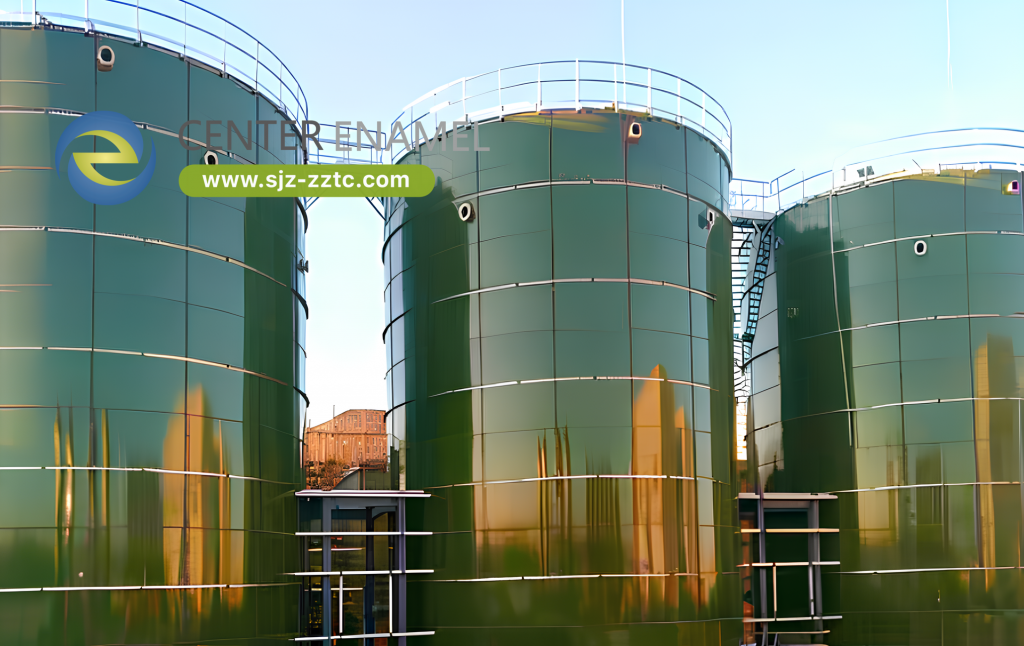Anaerobic Digestion Reactor for Livestock Manure Biogas Production

As the agricultural sector seeks sustainable waste management solutions and renewable energy sources, anaerobic digestion (AD) has emerged as a pivotal technology. By converting livestock manure into biogas, anaerobic digestion reactors not only mitigate environmental impacts but also generate valuable energy and nutrient-rich by-products. Center Enamel offers advanced AD reactor solutions engineered for livestock manure treatment, ensuring optimal biogas production and long-term operational reliability.
Livestock farms generate substantial quantities of manure, which, if not managed properly, can contribute to greenhouse gas emissions, water pollution, and odor issues. Anaerobic digestion addresses these challenges by facilitating the microbial decomposition of manure in an oxygen-free environment. This process produces methane-rich biogas that can be used for electricity generation, heating, or upgraded to biomethane for broader applications. Additionally, the resulting digestate serves as an organic fertilizer, closing the nutrient loop and promoting sustainable agricultural practices.
Reactor Configurations for Livestock Manure
Various reactor designs have been developed to optimize the anaerobic digestion process, each tailored to different operational scales and manure characteristics.
Continuous Stirred Tank Reactor (CSTR):
The CSTR is widely adopted for livestock manure treatment due to its ability to maintain a homogeneous mixture and stable microbial activity. Its continuous mixing ensures that the organic material is evenly distributed, which is essential for achieving consistent biogas yields. This design is particularly effective for facilities with a steady flow of manure input.
Plug Flow Reactor (PFR):
For manure with a higher fiber content, the PFR offers significant advantages. Its design facilitates longer retention times, which enhances the breakdown of fibrous organic matter. This configuration is especially suitable for operations where the manure’s physical characteristics necessitate a slower, more controlled digestion process.
Covered Lagoon Digesters:
For farms with ample land, covered lagoon digesters provide a cost-effective solution. These systems require minimal infrastructure and leverage natural processes to capture and store biogas. While they may not offer the same level of process control as tank-based reactors, they are an attractive option for large-scale operations with lower capital investment requirements.
Process Optimization and Operational Efficiency
Maximizing biogas production from livestock manure requires careful management of several operational parameters. Temperature control is paramount; mesophilic conditions (approximately 30–40°C) offer stable digestion with relatively low energy input, while thermophilic conditions (around 50–60°C) can accelerate microbial activity and increase gas production. The choice between these temperature ranges depends on the specific characteristics of the manure and the operational objectives of the facility.
Pre-treatment methods, such as mechanical disintegration or thermal-chemical hydrolysis, can also enhance the digestibility of manure by breaking down complex organic structures. In some instances, co-digestion with other organic waste streams, such as crop residues or food processing by-products, may improve the carbon-to-nitrogen ratio, further optimizing biogas yields.
Economic and Environmental Benefits
The implementation of anaerobic digestion reactors for livestock manure yields significant economic and environmental advantages. Environmentally, these systems reduce methane emissions—a potent greenhouse gas—by capturing and utilizing biogas that would otherwise be released into the atmosphere. This reduction in emissions contributes to a lower overall greenhouse gas footprint for livestock operations.
From an economic perspective, the biogas produced can offset energy costs or be sold to the grid, thereby generating an additional revenue stream. The digestate by-product serves as a high-quality organic fertilizer, reducing reliance on synthetic fertilizers and supporting sustainable farming practices. In many regions, government incentives and carbon credits further enhance the financial viability of adopting anaerobic digestion technology.
Why Choose Center Enamel?
Center Enamel brings extensive experience in the design and manufacture of anaerobic digestion reactors tailored for livestock manure treatment. Our systems are engineered using advanced materials and precision manufacturing techniques to ensure durability and high performance under demanding operating conditions. We provide customized solutions that can be scaled to suit both small-scale farms and large commercial operations, always adhering to rigorous international quality and environmental standards.
Our commitment to innovation and sustainability means that Center Enamel not only delivers reactors that optimize biogas production but also contributes to the broader goal of environmental stewardship in the agricultural sector.
For more information on how our anaerobic digestion systems can enhance the efficiency and sustainability of your livestock operations, please contact Center Enamel.
